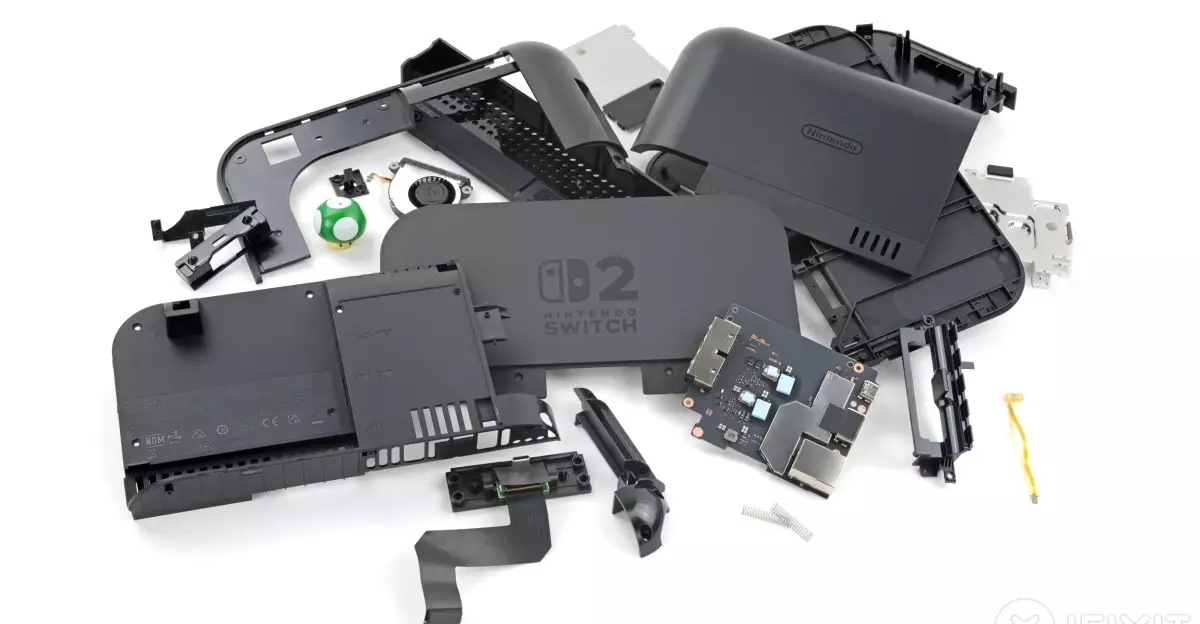The gaming community once warmly embraced Nintendo for its inventive spirit and user-friendly design ethos. However, recent reports regarding the repairability of the Nintendo Switch 2 cast a shadow over that legacy. A recent teardown by iFixit, a company well-respected for its in-depth analysis of consumer electronics, reveals a worrying trend: the new console is not only more difficult to repair than its predecessor but actively discourages DIY interventions. Instead of the empowering experience players expect, the Switch 2 may restrict their options, turning what should be a joyous gaming journey into one fraught with frustration.
Startling Repairability Scores
In an era that is becoming increasingly concerned with sustainability and repairability, the new Nintendo Switch has earned a disheartening score of just 3 out of 10 from iFixit. This score reflects significant regression from the original Switch, which was initially rated at 8 out of 10 but later downgraded to 4 when judged by contemporary standards. With each iteration, Nintendo’s approach to component accessibility seems to slide deeper into the territory of inconvenience. This change is not merely a technical detail; it undermines the consumer’s ability to manage their own hardware. For a console released in a time when tech-savvy consumers push for longer life cycles through repairs, this is an indefensible move.
Glued and Soldered: A Repair Nightmare
Many gamers and electronics enthusiasts are accustomed to the thrill of disassembling their devices, exploring how they work, and ultimately repairing them as needed. Unfortunately, the Switch 2 design seems to prioritize aesthetic minimalism over practical usability. The battery—troublesome in the previous design—is now secured with powerful adhesive, making it an arduous challenge to replace. It’s indicative of a wider trend where manufacturers not only make the components less accessible but also bury critical screws behind void-inducing stickers. This further complicates the repairing process and raises suspicions of planned obsolescence.
Moreover, essential components such as USB-C ports, flash storage modules, and even the game card reader—which were modular in earlier models—are now soldered to the mainboard, increasing the risk of damaging significant parts of the hardware during attempts at repair. This current focus on inaccessibility hints at a troubling reality: Nintendo might prioritize sales of new units over the customer’s ability to manage the lifecycle of their existing products.
Issues with Essential Components
While some components in the Switch 2 remain relatively easy to replace—like the headphone jack, speakers, and microphone—the positives end there. The battery remains a daunting obstacle, with iFixit labeling its removal an “absolute mission.” The mountains of isopropyl alcohol and specialized pry tools needed to accomplish this task conjure images of a surgeon navigating a complex operation. To complicate matters further, users have reported that the adhesives employed result in the foam disintegrating upon removal, making future replacements messy and convoluted.
The thermal paste used in the Switch 2 also raises alarms. iFixit found not just one type, but three different thermal pastes, which signals a lack of standardization—and this could lead to overheating issues over time. Incompetence in a console’s thermal management can shorten its lifespan significantly, a fact that should be alarming for any prospective buyer.
Joy-Con Troubles Persist
In addition to addressing the body of the console itself, the new Joy-Cons present their own challenges. Despite using similar technology as the previous models, they are reportedly harder to disassemble. This is unsettling given that the Joy-Con drift issue—a rampant complaint among players—relies on a resistive material that wears away over time. The difficulty in repairing or replacing critical components could only exacerbate these ongoing concerns.
With alternatives like Hall effect sensors still out of reach for most gamers, the issue of joystick drift may still plague loyal Nintendo fans. Without easy access to repairs, the specter of a growing repair crisis looms large above the gaming experience.
As developers prioritize sleek design and aesthetic appeal, they are simultaneously sacrificing the core values of user control and product longevity. Unfortunately, Nintendo’s choice to obscure repair access in the Switch 2 not only threatens consumer trust but also swings the brand further from its once-promising reputation as a champion of accessibility and creativity. Rather than welcoming repair insights, they seem to be nudging players back into the world of disposable electronics, which is a disappointing turn indeed.


Leave a Reply